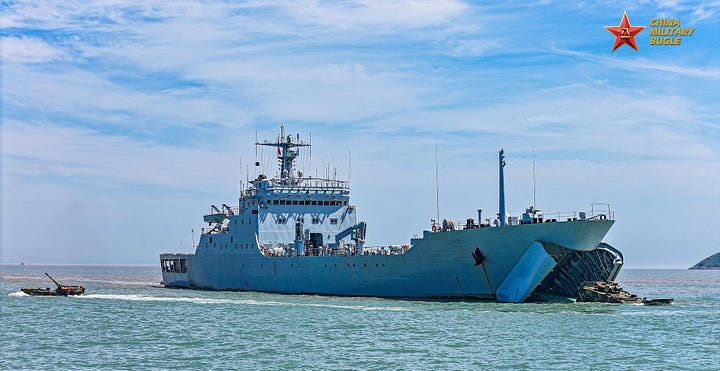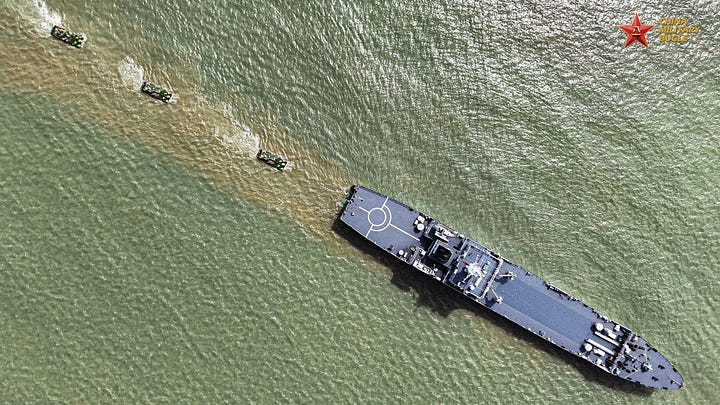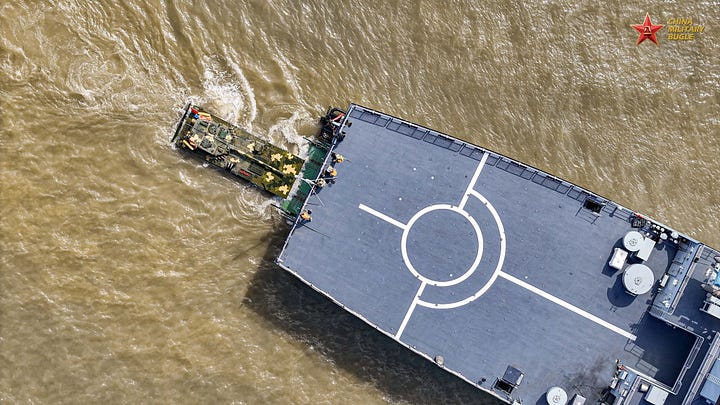The PLA's Peculiar Practice Of Using Landing Ship Tanks (LSTs) To Launch Amphibious Armoured Vehicles Offshore
🇨🇳
One of the most peculiar aspects of the People’s Liberation Army’s (PLA) approach to amphibious operations involves the regular employment of PLA Navy (PLAN) landing ship tank (LST) amphibious ships to launch PLA Ground Force (PLAGF) amphibious armoured vehicles, namely the Type 05 and vehicles based on the underlying chassis, offshore. LSTs are highly specialized ship designs that are necessarily compromised in order to approach a breach of suitable gradient and offload non-amphibious vehicles—including tanks—as well as other forms of self-propelled and non-self-propelled heavy equipment directly to the shore.




While the PLAN’s LSTs—some of which have a partially floodable deck with both a bow and stern ramp—can be used to transport and launch Type 05 amphibious armoured vehicles and similar near a coastline, this is not what these ships are designed for. If the PLA wants to deploy armoured amphibious vehicles in such a manner, it can pursue a faster and—in essentially every other respect—more versatile landing ship design that is incapable of beaching itself. Japan’s Osumi-class design, which was and remains unusual in several respects, constitutes something of a template for such a design.
The PLA is, of course, making use of the vessels that are in the PLAN’s inventory to support training events. It is worth noting that China has not built any LSTs in the better part of a decade, and most of the PLAN’s LSTs were built twenty or more years ago. In this respect, there is nothing particularly unusual about the PLA’s employment of existing LSTs to launch amphibious armoured vehicles offshore. The PLA will, however, require the PLAN’s LSTs, as well as smaller conceptually similar landing ships and craft that are primarily operated by the PLAGF, to deliver large numbers of non-amphibious vehicles—bulldozers, artillery, radars, surface-to-air missile systems, pontoon bridges, cranes, trucks for logistics, rough terrain forklifts, and so forth—to beaches on Taiwan as well as various types of supplies that will have be unloaded early in an amphibious invasion before the PLA can secure the use of a Taiwanese port and before the PLA can deploy China’s new jack-up landing barges.
Given the above, the use of the PLAN’s LSTs to launch PLAGF amphibious armoured vehicles offshore is in tension with the imperative of using China’s finite number of LSTs to deliver the non-amphibious vehicles and other types of non-amphibious equipment that will have to be delivered to a landing zone. It is worth noting that China will likely have to use a single LST to deliver an artillery battery (with ammunition), or a surface-to-air missile battery (with supporting equipment), or a dozen or so bulldozers/excavators/loaders and similar construction plant to a landing zone on Taiwan. If the PLAN’s LSTs are primarily, if not exclusively, used to support the deployment of the armoured amphibious vehicles operated by the PLAGF’s small number of amphibious combined arms brigades, the initial waves of a PLAGF landing force will likely have to fight on the island of Taiwan without critically important supporting equipment.

